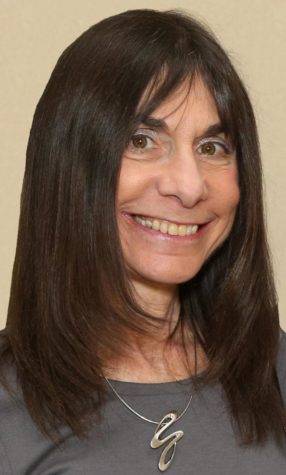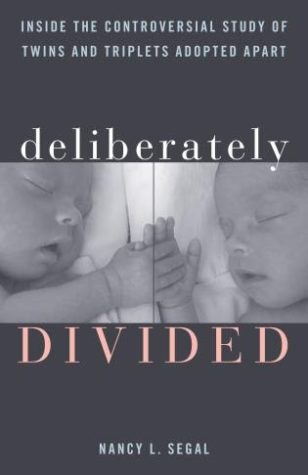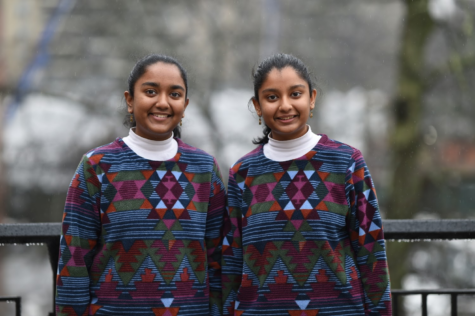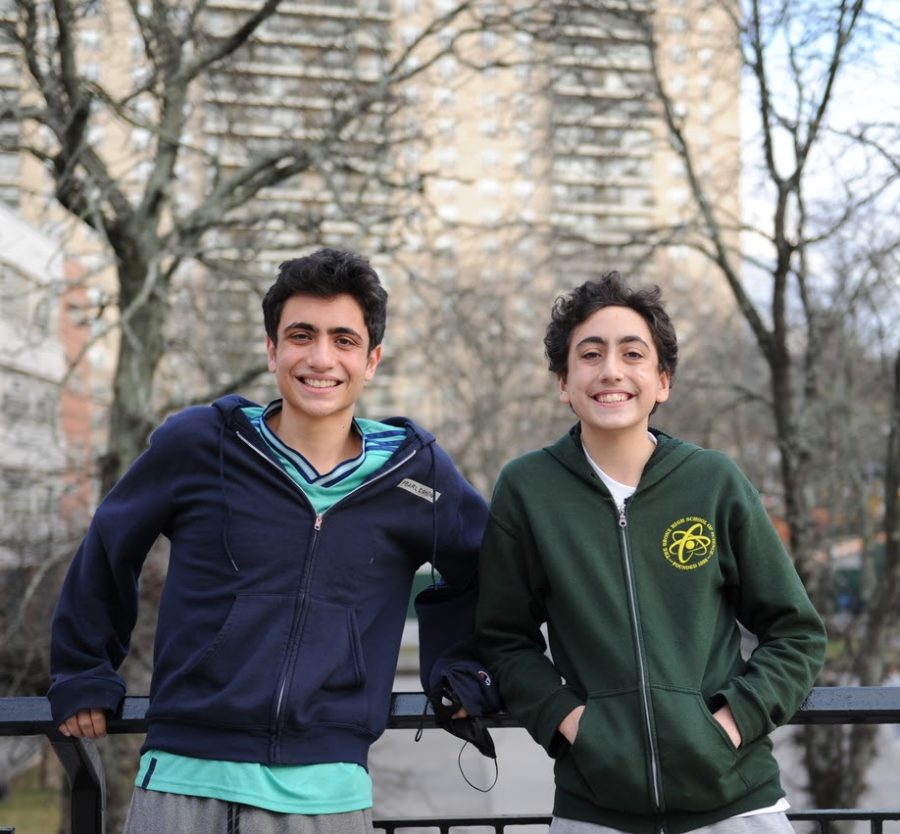Powerhouse Pairs: Twins at Bronx Science
Attending Bronx Science as a twin brings double the genes, double the stress, but double the fun.
Fraternal twins Louis Nahon ’23 and Raphael Nahon ’23 rarely argue, sharing a lot of the same friends, classes, and extracurricular activities. “The main questions we get are who is taller, older, or smarter (me, me, and me),” said Louis.
During eighth grade, with our hearts racing and our breaths held, my brother and I slowly unfolded our Specialized High School Aptitude Test results. Tracking our eyes over both sheets of paper, we realized that our long-awaited admission letters mirrored each other word-for-word. My twin brother Brian Caballo ’22 and I had gained acceptance into the same two high schools — and highlighted in boldface font was the place where we’d spend our next four years: The Bronx High School of Science.
The initial surprise quickly subsided. After all, we had opened our letters in the same classroom, with the same teacher perched over our shoulders, and with grades that were narrowly differentiated by tenth-point margins. Our high school lists and academic interests — much like the final three letters in our names (Marian, Brian) — unintentionally mirrored each other, as did many aspects of our lives. We agreed not to influence each other’s decisions, but we ultimately ended up walking through the same green doors at Bronx Science that fall.
Three years after I received my results, three other pairs of twins received the same news. Alexandra Blee ’25 unfolded her admissions acceptance alongside her twin Alistair Blee ’25. “I was surprised,” said Alexandra, “but I knew we were in the same intellectual bracket, so I was not really taken aback.”
That spring, Mariam Iashvili ’25 learned that she, too, would attend Bronx Science with her twin brother Giorgi Iashvili ’25. “We were relieved because it would be easier for both us and our parents, since they pay for our transportation,” said Mariam. “We have always gone to the same school, so it wasn’t anything new.” It went the same way for twins Emma Chubb ’25 and Lucas Chubb ’25.

Some twins did not receive the same news in the spring of their eighth grade year. Selina Li ’22 is grateful that she and her fraternal twin attend different high schools after spending all of their elementary school years together. “It was pretty bad — we were constantly being compared to each other by our teachers, which was not great,” she said.
For Victoria Diaz ’22, whose twin sister attends a private Catholic school on a full scholarship, the decision was a matter of maximizing opportunities. “In middle school, we had this collective ‘identity’ of being twins, despite being fraternal,” said Diaz. Though the two are extremely close, Diaz noted, “Attending separate high schools allowed us to shine as two separate individuals.”
In contrast, twins Raphael Nahon ’23 and Louis Nahon ’23 wished to go to the same school, purposefully listing Bronx Science as their first choices. If Emmy Sale ’25 and Darby Sale ’25 hadn’t received acceptances to the same high school, “we most likely would have moved out of New York City,” said Emmy. Twins Rosemary Newman ’23 and Elizabeth Newman ’23 made it their goal to attend the same high school, specifically aligning their high school lists to maximize their chances. “We are very close — we are best friends,” said Elizabeth.
The Newman sisters, an identical pair of twins, share a complete set of genes. They are monozygotic (MZ) twins — the product of a single fertilized egg splitting into two. Fraternal twins are dizygotic (DZ), resulting from the fertilization of two separate eggs during the same pregnancy. While DZ twins can be of the opposite sex (OS) like Alexandra and Alistair or Mariam and Giorgi, it is far more common for fraternal twins to be of the same sex (SS). Emmy and Darby, as well as Raphael and Louis, are both examples of SS dizygotic twins.

Considering that approximately 750 out of thousands of applicants are accepted into Bronx Science every year, some may assume that accepted twins maintain similar academic profiles. Yet, studies suggest that this is more so the case for identical twins.
“A wealth of studies show that identical twins are more alike than fraternal twins, consistent with genetic influence on intellectual skills and interests,” said Dr. Nancy Segal ’69, Professor of Psychology at California State Fullerton and Director of the Twin Studies Center. As a same-sex fraternal twin who attended Bronx Science herself, Dr. Segal has published hundreds of scientific papers on the study of twins, establishing herself as one of the world’s leading and most-cited twin researchers. Her recently released book, Deliberately Divided: Inside the Controversial Study of Twins and Triplets Adopted Apart, explores a secret and controversial twin separation study.
Dr. Segal grew interested in pursuing the field of twin studies after noticing striking differences between her and her sister, despite their common upbringing. Her research on twins contributes to the understanding of human behavior and disease as a whole. “You compare similarities in samples of MZ and DZ twins. If MZ twins are more alike, this is consistent with genetic effects on the traits under study.”
Bronx Science’s twins can be quite similar: Rosemary and Elizabeth are both track runners. Emmy and Darby play soccer alongside each other, as do Raphael and Louis. But each twin is distinct in their own way. “Though we shared a womb, my brother and I are still different people with different goals and learning capacities,” said Alexandra.
Fraternal twins are as genetically alike as full siblings, sharing ½ their genes on average (like any set of full siblings). They may be more alike than full siblings in some ways because they are the same age and enter the family at the same time. But they are less alike than identical twins. “I did a study for my Ph.D. in which I observed young MZ and DZ twins working on a puzzle together. The MZ twins worked beautifully together — like dance partners — DZ twins less so,” said Dr. Segal.
While fraternal twins are genetically no different than the many sets of regular siblings that attend school together, experiencing high school within the exact same time frame brings unique conveniences and inconveniences.

“I share classes with Giorgi, but he prefers to avoid me when he sees me in class or in the hallway,” said Mariam. “I’m indifferent because I can annoy him in class, which is pretty fun.”
Classroom separation of twins (putting them into different classes) has been a heated subject of discussion over the years. Some psychologists argue that separation fosters growth and individuality. Others believe that enforced separation may bring anxiety and other mental health issues, especially in elementary school.
Fourteen states have passed laws that allow parents some control in classroom separation decisions, but New York has not. Policy varies from school to school. Bronx Science does not have a specific twin separation policy. Dr. Segal believes that decisions surrounding same or separate classrooms and schools for twins should be made on a case-by-case basis, and that schools should take parents’ and twins’ preferences very seriously.
Identical twins Rosemary and Elizabeth have spent three class periods together every year so far. Though all of the Bronx Science twins see the benefits in sharing class notes or completing homework together at home, “We generally prefer to be in separate classes because we already spend a lot of time with each other, and often teachers can’t tell us apart,” said Elizabeth.
For fraternal sisters Pratithi Navati ’25 and Pramithi Navati ’25, the issue extends past similar appearances. “Our names are so similar that whenever we apply for something, our parents make sure to send a note,” they said. “They have to call, or else people think that we are sending the application in twice.” Unlike Rosemary and Elizabeth, however, the two haven’t shared any classes since pre-school. “We believe that this has helped us in developing our individuality.”

“If twins do well and are happy, that should be the guiding principle,” said Dr. Segal, whose twin sister separately attended Hunter College High School. “A disadvantage is possible accusations of cheating due to similar answers and test scores. I have been a legal expert on such cases, mostly involving monozygotic twins, in which I fully believe the charges are false.”
Though the twins themselves know of their own idiosyncrasies, twinhood can be a challenge when it comes to distinguishing themselves to others. People sometimes mistake Emmy for Darby, though they are fraternal.
When it comes to academic pressure, “It is less the competition between the two of us that bothers me, but more the comparison other people put on us,” said Emmy.
Who is older? Who is taller? Who is smarter? Who is better?
Mariam and Giorgi are often asked who was born first. “It is a very repetitive question and it slightly annoys me because I was born a minute later and my brother uses that information to feel superior. It’s funny, however,” said Mariam. (As the twin born a minute earlier than my brother, I wholeheartedly agree.)
The most common question for Bronx Science twins: what is it like?
“When ninth graders enter Bronx Science, at first, they have few friends with whom to talk. For twins, this is never the case. A twin always has someone to talk to, and they’ll support you if necessary,” said Louis.
“It’s not bad being a twin, overall,” said Raphael. “I would recommend it!”
“When ninth graders enter Bronx Science, at first, they have few friends with whom to talk. For twins, this is never the case. A twin always has someone to talk to, and they’ll support you if necessary,” said Louis Nahon ’23.
Marian Caballo is a Copy Chief for ‘The Science Survey,’ and she is elated to be on staff for a second year. She is drawn to journalism because it...

